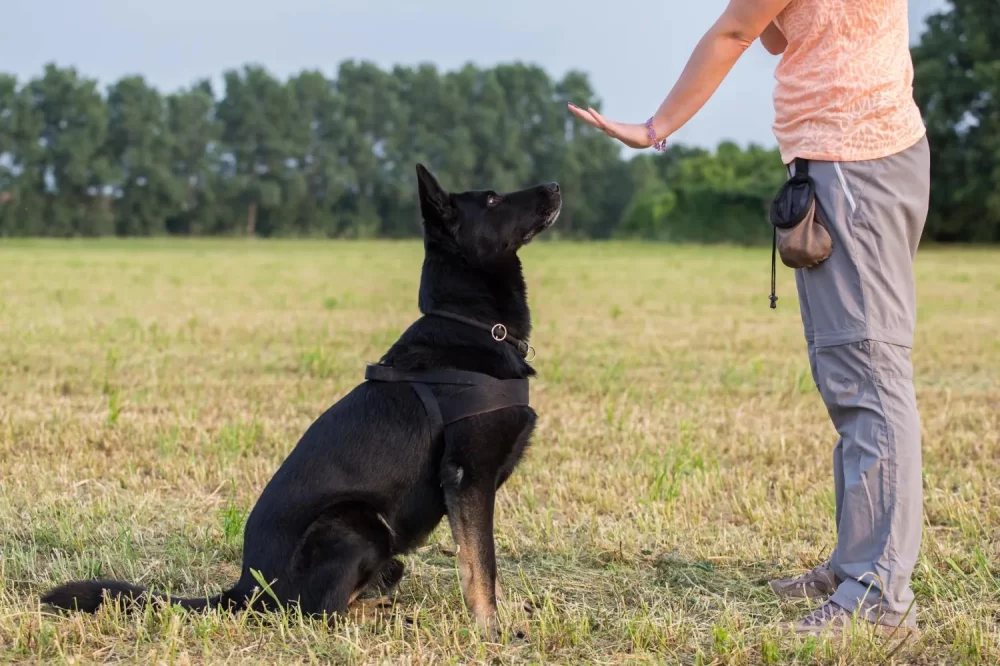- understanding-the-importance-of-the-stay-command
- preparing-for-dog-stay-training
- step-by-step-guide-to-teaching-your-dog-to-stay
- common-challenges-and-how-to-overcome-them
- real-life-success-stories-in-dog-stay-training
- hidden-brook-veterinary-support-for-training-needs
1. Understanding the Importance of the Stay Command
The stay command is a fundamental part of dog obedience training. It teaches your dog self-control and patience, which are essential for their safety and your peace of mind. Whether preventing your dog from running into traffic or ensuring calm behavior when guests arrive, a reliable stay command is invaluable.
Teaching your dog to stay also enhances communication between you and your pet, building trust and respect. This command lays the foundation for more advanced training and helps create a well-mannered companion.

1008 W Hazelwood Dr, Urbana, IL 61802, USA
See Details1.1 Why Consistency Matters in Stay Training
Consistency in practice and commands helps your dog understand expectations clearly. Using the same verbal cues, hand signals, and rewarding the right behavior strengthens your dog’s ability to stay on command in various environments and distractions.
2. Preparing for Dog Stay Training
Before starting to teach your dog to stay, preparation is key to success. Setting up the right environment, choosing effective rewards, and managing distractions all contribute to a smooth learning experience.
2.1 Selecting the Ideal Training Space
Begin training in a quiet, distraction-free area where your dog feels comfortable. This helps your dog focus entirely on learning the stay command without external interruptions.
2.2 Choosing Motivating Rewards
Tasty treats, praise, or favorite toys work as excellent motivators. Observing what your dog responds to best helps in maintaining enthusiasm during training sessions.
2.3 Timing and Patience
Short, frequent training sessions—around 5 to 10 minutes—keep your dog engaged without causing frustration. Patience and positive reinforcement encourage steady progress.
3. Step-by-Step Guide to Teaching Your Dog to Stay
Teaching your dog to stay involves a gradual process, reinforcing behavior over time. The following detailed steps can help ensure success.
3.1 Start with the Sit Command
Begin by asking your dog to sit. A calm, seated position forms the basis for the stay command and makes it easier for your dog to hold still.
3.2 Introduce the Stay Command
With your dog sitting, show your palm facing them and clearly say “stay.” Take one small step back immediately and then return to reward if your dog remains still.
3.3 Gradually Increase Distance and Duration
Slowly increase the number of steps you take away and the time your dog holds the stay. Always return to your dog to give praise or treats—never call them to you initially, as this can confuse the concept of “stay.”
3.4 Add Real-Life Distractions
Once your dog masters staying at short distances in quiet settings, practice with distractions like other people, noises, or in new environments. This builds reliability in everyday situations.
4. Common Challenges and How to Overcome Them
Training your dog to stay can come with obstacles, but understanding these helps maintain progress.
4.1 Impatience and Moving Too Quickly
Trying to rush the process often leads to confusion. If your dog breaks stay, calmly reset and shorten the distance or time before trying again.
4.2 Inconsistent Commands or Signals
Always use the same word and hand signal for stay to avoid mixed messages. Consistency is key to building your dog’s understanding.
4.3 Difficulty with Distractions
Some dogs struggle to stay when distractions increase. Break down training into smaller steps, gradually introducing distractions while rewarding calm behavior.
5. Real-Life Success Stories in Dog Stay Training
Take the example of Luna, a lively Border Collie who initially found it difficult to stay in place. Her owner applied gradual, patient training using the step-by-step method described above. After consistent practice over several weeks, Luna reliably stayed during walks and at home, making outings safer and more enjoyable.
Another story is Max, a Golden Retriever, who was prone to darting out of the door. His owner partnered with a trainer and incorporated stay training with daily routine. The results were impressive: Max now waits calmly for permission, reducing anxiety for both dog and owner.
These stories show how teaching a dog to stay not only enhances obedience but also deepens the bond between dog and owner through shared success.
6. How Hidden Brook Veterinary Supports Your Dog Training Journey
Hidden Brook Veterinary understands that training is a vital part of your dog’s health and happiness. They provide expert guidance on behavior, training tools, and products to assist with commands like stay. Whether you need professional advice or specialized treats to reward your dog, Hidden Brook Veterinary is a trusted resource for comprehensive support.
Partnering with Hidden Brook Veterinary ensures you have access to the best resources to help your dog learn and thrive.











